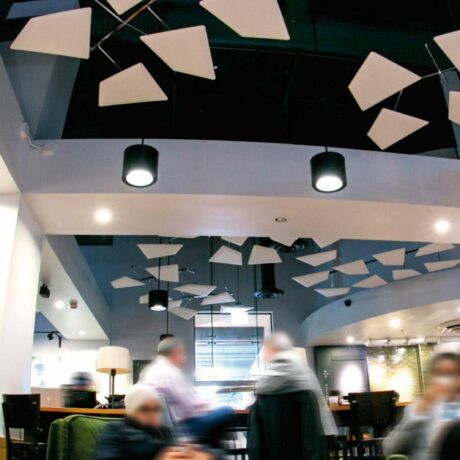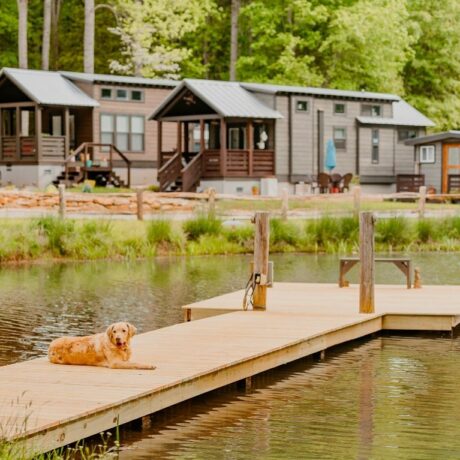This is the fifth installment in which we bring these world treasures to our readers country by country. See the March-April issue for the World Heritage Sites in the United States, the May-June issue for those in Mexico, the July-August issue for those in Canada, and the September-October issue for the United Kingdom.


The United Nations Educational, Scientific and Cultural Organization (UNESCO) World Heritage Sites are places of importance to cultural or natural heritage as described in the UNESCO World Heritage Convention, established in 1972. There are forty-nine World Heritage Sites in Spain. (There are three different types of properties possible: cultural, natural, and mixed.)
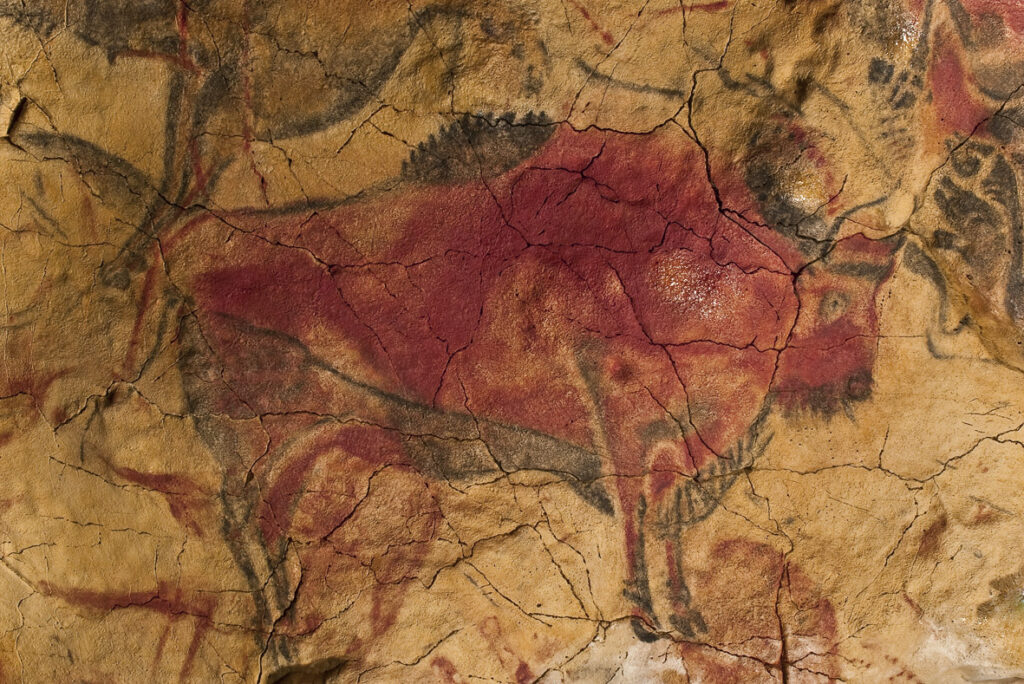
01/ The Cave of Altamira contains examples of cave painting from the Upper Paleolithic period (from 35,000 to 11,000 BC). The original listing contained seventeen decorated caves—well-preserved because of their deep isolation from the external climate.

02/ The Roman aqueduct in the Old Town of Segovia was constructed in the 1st century, the medieval Alcázar palace in the 11th century, and the cathedral in the 16th.

03/ The Kingdom of Asturias remained the only Christian region of Spain in the 9th century. It developed its own style of Pre-Romanesque art and architecture that is displayed in various churches and other monuments. Pictured here is one of The Monuments of Oviedo.

04/ The Historic Centre of Córdoba, is one of the largest of its kind in Europe. In 1984, UNESCO registered the Mosque–Cathedral of Córdoba as a World Heritage Site. A decade later, it expanded the inscription to include much of the old town with a wealth of monuments preserving large traces of Roman, Arabic, and Christian times.

05/ Alhambra, Generalife and Albayzín are remnants of the Moorish influence in southern Spain. They were built by the rulers of the Emirate of Granada.

06/ The Gothic-style Burgos Cathedral was constructed between the 13th and 16th centuries. It is the burial place of Spanish national hero, El Cid.

07/ El Escorial is one of several Spanish royal sites due to its history as a residence of the royal family. The palace was designed by King Philip II and architect Juan Bautista de Toledo to serve as a monument to Spain’s central role in the Christian world.

08/ The architecture of Antoni Gaudí is part of the Modernist style, but his designs are described as highly unique. The original listing featured Park Güell, Palau Güell, and Casa Milà (pictured here); the 2005 extension added Casa Vicens, the crypt and nativity façade of Sagrada Família, Casa Batlló, and the crypt at Colònia Güell.

09/ The Cathedral of Santiago de Compostela is the reputed burial-place of the apostle James, and is the terminus of the Way of St. James, a pilgrimage across northern Spain. The town was destroyed by Muslims in the 10th century and rebuilt during the following century.

10/ The Old Town of Ávila with its defensive wall surrounding the original town was constructed in the 11th century. It features 82 semicircular towers and 9 gates and is one of the most complete examples of town walls in Spain.

12/ The Mudéjar Architecture of Aragon is a blending of traditional Islamic and contemporary European styles The listing is comprised of 4 churches and 6 six monuments. Pictured here is Iglesia de San Pedro in Teruel.
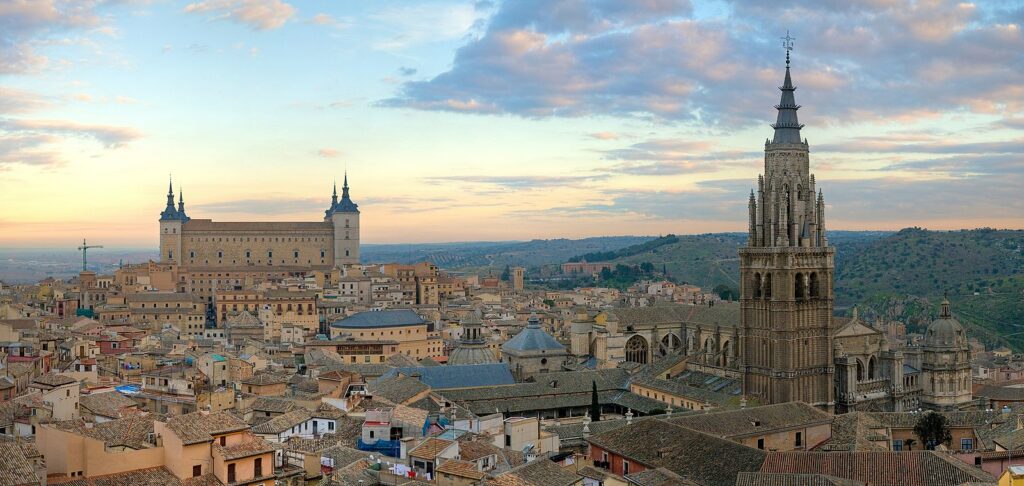
13/ Toledo was founded by the Romans, served as the capital of the Visigothic Kingdom, was important in Muslim Spain and during the Reconquista, and briefly served as the capital of Spain. The city combines Christian, Muslim, and Jewish influences.

14/ Garajonay National Park (on the island of La Gomera, one of the Canary Islands is 70% covered by laurel forest, vegetation from the Paleogene period that disappeared from mainland Europe due to climate change, but had covered much of the southern part of the continent.

15/ The Old City of Salamanca is home to the University of Salamanca, founded in 1218—the oldest in Spain and among the oldest in Europe. The city was first conquered by the Carthaginians in the 3rd century, and later ruled by the Romans and Moors. The city center represents Romanesque, Gothic, Moorish, Renaissance, and Baroque architecture.

16/ The Cathedral of Saint Mary of the See (a/k/a Seville Cathedral) is a Roman Catholic cathedral in Seville that dates to the 15th century. It adjoins the Alcázar Palace complex and the General Archive of the Indies. It is the fourth-largest church in the world as well as the largest Gothic church.
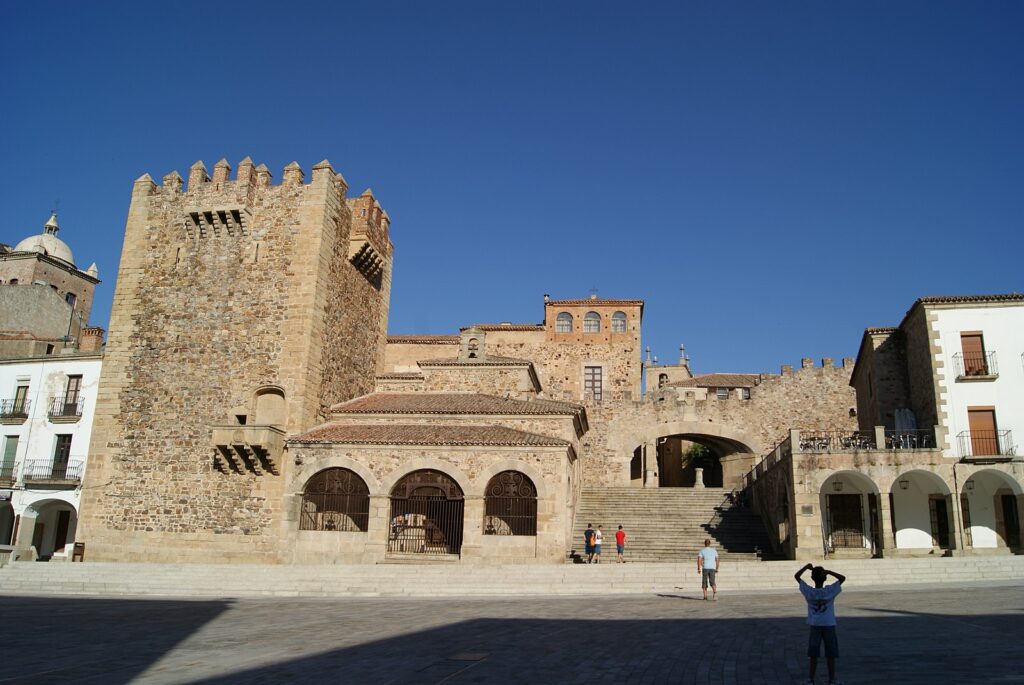
17/ The Old Town of Cáceres combines Roman, Islamic, Northern Gothic, and Italian Renaissance architectural influences, including more than 30 Islamic towers.

18/ The coast of Ibiza is home to a seagrass only found in the Mediterranean that supports a diverse coastal and marine ecosystem. The island also contains numerous Phoenician ruins, and the fortified and walled older portions of the city date to the 16th century.
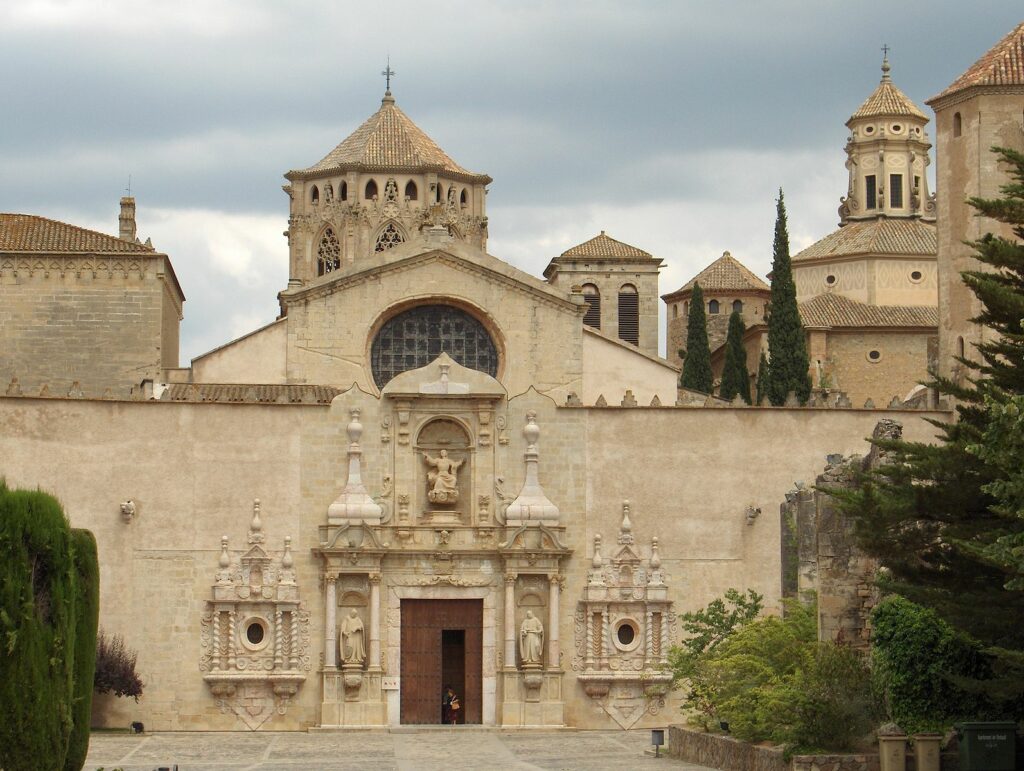
19/ The Poblet Monastery was founded by the Cistercians in 1151 and is one of the largest in Spain. It a burial site and is associated with the Crown of Aragon.

20/ Renovations of the Renaissance Monumental Ensembles of Úbeda and Baeza in the 16th century were done under the emerging Renaissance style and are among the first examples of the style in Spain.
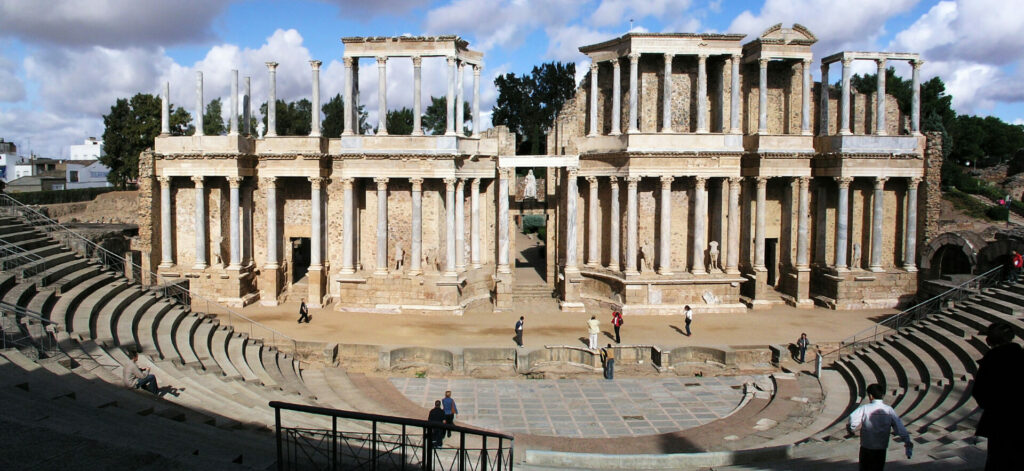
21/ Mérida was founded in 25 BC by the Romans as Emerita Augusta and was the capital of the Lusitania province. Remains from the Roman era include a bridge, aqueduct, amphitheater, theatre, circus, and forum.

22/ The Royal Monastery of Santa María de Guadalupe is a shrine to Mary found in the 13th century after being buried to hide it from Muslim invaders in 714. The Virgin of Guadalupe became an important symbol during the evangelization of America.

23/ The Route, or the Way of St. James, Commonly known as Camino de Santiago, is a pilgrimage from the French-Spanish border to the Cathedral of Santiago de Compostela, where the apostle James is believed to be buried.

24/ Doñana National Park consists of the delta region where the Guadalquivir River reaches the Atlantic Ocean. It is home to a diverse variety of biotopes, such as lagoons, marshlands, dunes, and maquis and holds more than 500,000 water fowl during the winter period.

25/ Patrimonio Mundial Pirineos – Monte Perdido straddles the border between Spain and France in the Pyrenees mountain chain. The summit of Monte Perdido (French: Mont Perdu) is on the Spanish side of the border.

26/ The Moors built the Historic Walled Town of Cuenca in the early 8th century; it was captured by the Christians in the 12th century. The cathedral is the first Gothic example in Spain and is also famous for its casas colgadas, houses that hang over the edge of a cliff.

27/ La Lonja de la Seda means Silk Exchange in English, and the group of Gothic buildings demonstrate the wealth of Valencia as an important Mediterranean and European mercantile city in the 15th and 16th centuries.

28/ Palau de la Música Catalana and Hospital de Sant Pau (pictured) in Barcelona were constructed in the early 20th century and designed by Lluís Domènech i Montaner in the modernist Art Nouveau style. The two buildings are Montaner’s most famous works.

29/ Las Médulas is a historic gold-mining site—the most important gold mine, as well as the largest open-pit gold mine in the entire Roman Empire.

30/ The monasteries of San Millán de Suso and San Millán de Yuso (pictured) [6th – 16th centuries] are in the village of San Millán de la Cogolla. The Yuso monastery is considered the birthplace of written and spoken Spanish.

31/ The original 1998 listing contained examples of Upper Paleolithic rock art in the Côa Valley of Portugal. In 2010 it was extended to include 645 engravings in the archaeological zone of Siega Verde in Spain. The two sites represent the most well-preserved collection of open-air Paleolithic art in the Iberian Peninsula.

32/ The group of over 700 sites of prehistoric Rock art of the Iberian Mediterranean Basin, also known as Levantine art are in the eastern part of Spain and contain rock art dating to the Upper Paleolithic or Mesolithic periods of the Stone Age.

33/ The prominent Roman city of Tárraco at the site of modern-day Tarragona served as the provincial capital. The amphitheater was constructed in the 2nd century; most remains are only fragments or preserved under more modern buildings..

34/ Cardinal Cisneros founded the University of Alcalá in 1499; it is the first example of the planned university city, and the birthplace of Miguel de Cervantes, known for his contributions to the Spanish language and Western literature.

35/ The city of San Cristóbal de la Laguna an original and unplanned Upper Town, and “city-territory” Lower Town. It was Spain’s first non-fortified colonial town and served as a model for development in America. Many of its buildings date to the 16th century.

36/ The Palmeral or Palm Grove of is a system of date palm orchards planted in Roman times and underwent modifications in the medieval period under Islamic and Christian rulers. The Roman empire introduced water management techniques to the city of Elche where it is located.

37/ The Roman Walls of Lugo were built to protect the Roman town of Lucus in the 3rd century. They remain entirely intact and are the best remaining example in Western Europe.

38/ The Churches of the Vall de Boí are a set of nine Early Romanesque churches built from the 11th to 14th century which are unique for their tall, square bell towers.

39/ The caves in the Atapuerca Mountains contain fossil remains of the earliest human beings discovered in Europe dating from nearly one million years ago. The Sima de los Huesos or “Pit of Bones” contains the world’s largest collection of hominid fossils.

40/ The landscape around the Royal Palace of Aranjuez was developed by the Spanish royal family over a course of three centuries and contains innovative horticultural and design ideas. The area was the exclusive property of the royal family until the 19th century when the modern civilian city developed.

41/ The Vizcaya Bridge was designed by Alberto Palacio to cross the Nervion without disrupting maritime traffic to the Port of Bilbao. It was built in 1893 and is the world’s first transporter bridge.

42/ Teide National Park (in the Canary Islands) contains Mount Teide, a volcano and the highest elevation in Spain.

43/ The Tower of Hercules (Torre de Hércules) is the only fully preserved and functioning Roman lighthouse and the oldest extant lighthouse in the world. It is 180 feet tall and sits on a rock which is 187 feet tall at the entrance to the A Coruña harbor.

44/ The Cultural Landscape of Serra de Tramuntana on the coast of Majorca has been transformed by a millennium of agriculture involving water management. It revolves around farming units of feudal origins.

45/ Heritage of Mercury. Almadén (pictured) and Idrija is a joint UNESCO World Heritage Site in Almadén, Castile-La Mancha, Spain, and Idrija, Slovenia. It encompasses two mercury mining sites. In Almadén mercury has been extracted since Antiquity; in Idrija it was first found in 1490.

46/ The Antequera Dolmens Site comprises three megalithic monuments: the Menga (pictured) and Viera dolmens and the Tholos of El Romeral, and two natural monuments: La Peña de los Enamorados and El Torcal mountainous formations. Built during the Neolithic and Bronze Age, they are one of the most remarkable architectural works of European prehistory.

47/ The Ancient and Primeval Beech Forests of the Carpathians and Other Regions of Europe is a transnational serial nature site encompassing 94 component parts in 18 European countries, which protect the largest and least disturbed forests dominated by the beech tree.

48/ The Caliphate city of Medina Azahara is the archaeological site of a city built in the mid-10th century CE by the Umayyad dynasty as the seat of the Caliphate of Cordoba. It was laid to waste during the civil war that put an end to the Caliphate in 1009–10.

49/ Risco Caído is a land-form on the island of Gran Canaria, The site contains prehistoric cave dwellings, temples, and granaries attributed to the pre-Hispanic culture of the Canary Islands. It is also considered to have been used as an astronomical observatory by Aboriginal people.

50/ The Paseo del Prado is densely tree-lined, wide, and central avenue in Madrid. It is a landmark for the city residents and the location of important cultural and tourist spots in the city, including the so-called Golden Triangle of Art.



